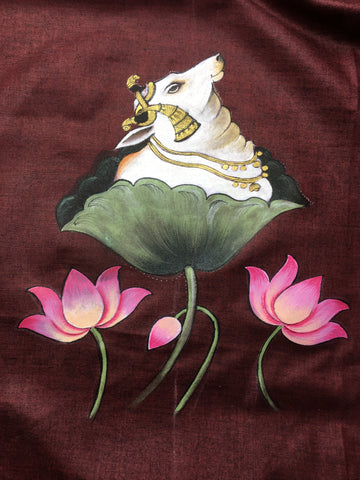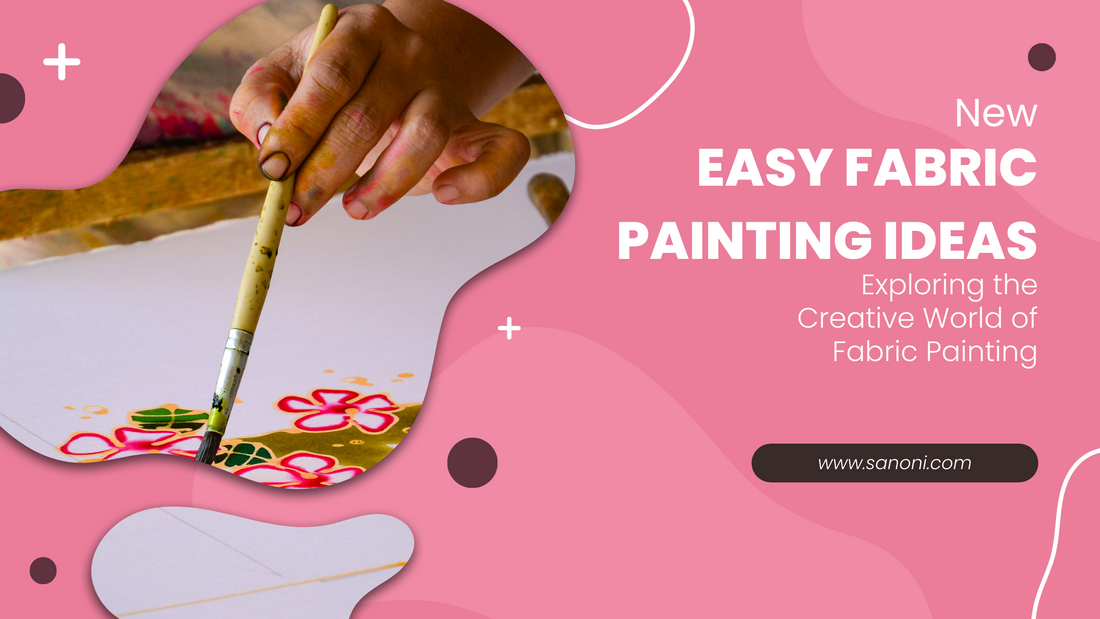Exploring the Creative World of Fabric Painting: Types, Techniques, and Inspiration
In the vibrant realm of art and creativity, fabric painting stands as a captivating avenue that allows individuals to transform ordinary textiles into stunning works of art. Whether you're a seasoned artist or just starting on your creative journey, fabric painting offers a myriad of possibilities to explore. In this comprehensive guide, we will delve into the world of fabric painting types, techniques, and inspiration, offering you valuable insights to fuel your artistic endeavors.
Table of Contents
- Introduction to Fabric Painting
- The Artistic Expression through Fabric
- Historical Significance
- Types of Fabric Painting
- Fabric Dyeing
- Fabric Printing
- Hand-Painted Fabric
- Stenciling on Fabric
- Choosing the Right Fabric
- Natural vs. Synthetic Fabrics
- Fabric Preparation
- Essential Tools and Materials
- Brushes and Applicators
- Fabric Paints and Dyes
- Stencils and Templates
- Fabric Painting Techniques
- Freehand Painting
- Tie-Dyeing
- Block Printing
- Batik
- Screen Printing
- Creating Your First Fabric Painting
- Step-by-Step Guide
- Tips for Beginners
- Advanced Fabric Painting
- Layering and Texturing
- Advanced Stenciling Techniques
- Combining Techniques
- Caring for Painted Fabrics
- Washing and Drying
- Ironing and Storing
- Fabric Painting as a Business
- Selling Your Creations
- Marketing Your Craft
- Inspiration for Fabric Painting
- Nature-Inspired Designs
- Abstract and Geometric Patterns
- Personalized Textile Art
- Frequently Asked Questions (FAQs)
- What types of fabric are best for fabric painting?
- Can I use regular acrylic paint for fabric painting?
- How do I fix the paint on fabric to make it permanent?
- What are some creative ways to use fabric painting in home decor?
- Are there any famous fabric painters I can draw inspiration from?
Introduction to Fabric Painting
Fabric painting is an age-old artistic practice that has gained immense popularity in recent years. It allows individuals to create unique designs, patterns, and artwork on various types of fabrics. From clothing and accessories to home decor items, fabric painting offers endless possibilities for creative expression.

Historical Significance
The history of fabric painting dates back centuries, with evidence of painted textiles found in ancient civilizations like Egypt, India, and China. These textiles often showcased intricate designs, reflecting the culture and aesthetics of their respective regions.
Types of Fabric Painting
Fabric painting encompasses various techniques, each offering its own set of possibilities and outcomes.Let's delve into a selection of the most frequently encountered varieties
Fabric Dyeing
Fabric dyeing involves immersing fabric in a dye bath, allowing the color to penetrate the fibers. This method produces vibrant and long-lasting results, making it a popular choice for tie-dyeing and creating gradient effects.
Fabric Printing
Fabric printing employs techniques like screen printing, block printing, and digital printing to transfer designs onto fabric surfaces. It allows for precise and intricate patterns, making it ideal for detailed artwork.
Hand-Painted Fabric
Hand-painted fabric involves using brushes or applicators to paint directly onto the fabric surface. This method offers complete artistic freedom and is perfect for creating one-of-a-kind designs.
Stenciling on Fabric
Stenciling involves using pre-cut templates to apply paint to fabric. It's a versatile technique that allows for the replication of complex designs with ease.
Choosing the Right Fabric
The type of fabric you choose significantly impacts the outcome of your fabric painting project. Natural fabrics like cotton, linen, and silk absorb paint differently than synthetic fabrics such as polyester. It's essential to select the right fabric for your project and prepare it properly by washing and ironing.
Essential Tools and Materials

To embark on your fabric painting journey, gather the following essentials:
Brushes and Applicators
Invest in quality brushes and applicators suitable for fabric painting. Different brushes offer various textures and effects.
Fabric Paints and Dyes
Choose fabric paints or dyes that are compatible with your chosen technique. These come in a wide range of colors and consistencies.
Stencils for fabric painting
If you're new to fabric painting, stencils and templates can help you create precise and symmetrical designs.
Fabric Painting Techniques
Mastering various fabric painting techniques opens up a world of creative possibilities. Here are some techniques to explore:
Freehand Painting

Freehand painting allows you to let your creativity flow directly onto the fabric. It's perfect for creating intricate designs and personalized artwork.
Tie-Dyeing

Tie-dyeing involves tying sections of fabric with string or rubber bands before applying dye. It results in mesmerizing, psychedelic patterns.
Block Printing

Block printing utilizes carved blocks to apply paint to the fabric. It's a traditional technique that can produce beautifully repetitive designs.
Batik

Batik involves applying wax to the fabric before dyeing it. The waxed areas resist the dye, creating unique, crackled patterns.
Screen Printing

Screen printing uses a stencil and a mesh screen to transfer ink onto fabric. It's a precise method that's great for bulk production.
Creating Your First Fabric Painting
Now that you have a basic understanding of fabric painting, let's guide you through creating your first masterpiece.
Step-by-Step Guide
- Choose Your Design: Decide on a design or pattern you want to paint on your fabric.
- Prepare Your Workspace: Lay out all your tools and materials in a clean, well-ventilated area.
- Practice on Scrap Fabric: If you're new to fabric painting, practice your design on a scrap piece of fabric first.
- Apply Your Design: Using your chosen technique, carefully apply your design to the fabric.
- Allow to Dry: Let your painted fabric dry completely before using or washing it.
Tips for Beginners
- Begin by working on uncomplicated designs and gradually advance to more intricate ones.
- Don't be discouraged by mistakes; they can often lead to unique creations.
- Experiment with different color combinations to discover your unique style.
Advanced Fabric Painting
As you gain experience, you can explore advanced techniques like layering, texturing, and combining various methods. These techniques will allow you to create intricate and visually stunning fabric art.
Layering and Texturing
Layering encompasses the process of applying numerous coats of paint to infuse depth and dimension into your artwork.. Texturing can be achieved by using techniques like stippling, sponging, or using textured brushes.
Advanced Stenciling Techniques
Experiment with more intricate stencils and multiple colors to create eye-catching designs.
Combining Techniques
Blend different fabric painting techniques to achieve unique and captivating results. For example, combine tie-dyeing with hand-painted details for a truly distinctive look.
Caring for Painted Fabrics
To ensure the longevity of your painted fabric creations, it's essential to know how to care for them properly. Follow these guidelines:
Washing and Drying
- Turn your painted fabric inside out before washing to protect the design.
- To safeguard against color fading, opt for a delicate cycle and cold water when laundering.
- Avoid using bleach or harsh detergents.
- Once washed, let the fabric air dry or use a low-heat setting in the dryer.
Ironing and Storing
- Iron your painted fabric on the reverse side or place a cloth between the fabric and the iron to avoid direct contact.
- Store your painted fabric items in a cool, dry place away from direct sunlight to prevent fading.
Fabric Painting as a Business
If you're passionate about fabric painting and wish to turn it into a business venture, here are some steps to consider:
Selling Your Creations
- Create an online presence through a website or social media platforms to showcase your work.
- Attend craft fairs, art markets, or local events to sell your painted fabric items.
- Offer custom orders to cater to individual preferences.
Marketing Your Craft
- Utilize social media to share behind-the-scenes glimpses of your creative process.
- Partner with influencers or bloggers to boost the visibility of your products.
- Build an email list to keep your customers informed about new releases and promotions.
Inspiration for Fabric Painting
Inspiration for fabric painting can be found everywhere. Here are a few concepts to ignite your creative inspiration:
Nature-Inspired Designs
Draw inspiration from the beauty of the natural world—flowers, leaves, animals, and landscapes can all serve as captivating motifs for your fabric art.
Abstract and Geometric Patterns
Experiment with abstract shapes and geometric patterns to create modern and eye-catching designs.
Personalized Textile Art
Consider creating personalized fabric art for special occasions such as weddings, birthdays, or anniversaries. Customized gifts hold sentimental value and are in high demand.
Frequently Asked Questions (FAQs)
- What types of fabric are best for fabric painting?
- Natural fabrics like cotton and silk are great choices. However, some synthetic fabrics can also work well with the right paints and techniques.
- Can I use regular acrylic paint for fabric painting?
- While regular acrylic paint can be used, it's recommended to use fabric-specific paints or acrylics mixed with a fabric medium for better durability.
- How do I fix the paint on fabric to make it permanent?
- Most fabric paints require heat setting. Follow the instructions on the paint's label or iron the painted fabric on the reverse side to set the design.
- What are some creative ways to use fabric painting in home decor?
- Consider painting pillow covers, curtains, tablecloths, or wall hangings to add a personal touch to your living space.
- Are there any famous fabric painters I can draw inspiration from?
- Yes, renowned artists like Kaffe Fassett and Anna Maria Horner have made significant contributions to the world of fabric painting and design. Explore their work for inspiration.
In conclusion, fabric painting is a delightful and versatile art form that allows you to infuse your creativity into everyday items. With the right techniques, materials, and inspiration, you can create unique pieces of art that are not only visually appealing but also deeply personal. So, grab your brushes and paints, and start exploring the fascinating world of fabric painting. Access your creative potential, and let your imagination run wild!

